Hello again! If you missed the first part of my journey across Alberta’s Cowboy Trail I highly recommend checking it out, otherwise this will make just about zero sense…
I woke up on day 3, September 22nd, 2021, at home in my own bed, knowing I made the right choice. I had slept for about twelve hours and before I got too too comfortable, I headed back to Priddis to pick up right where I left off. I arrived about noon.
From my journal:
“All the romanticizing about traveling The Cowboy Trail and I didn’t think about the toll it would take on my body. I have just under 48 hours to complete my journey.”
At this point I had shot two rolls of 120 and 2 of 35mm, and about 100 digitals. Pretty even on all fronts. The plan from here was to make it to Priddis by day’s end and with a travel time of two hours and a time-budget of eight I could be fairly leisure about it.
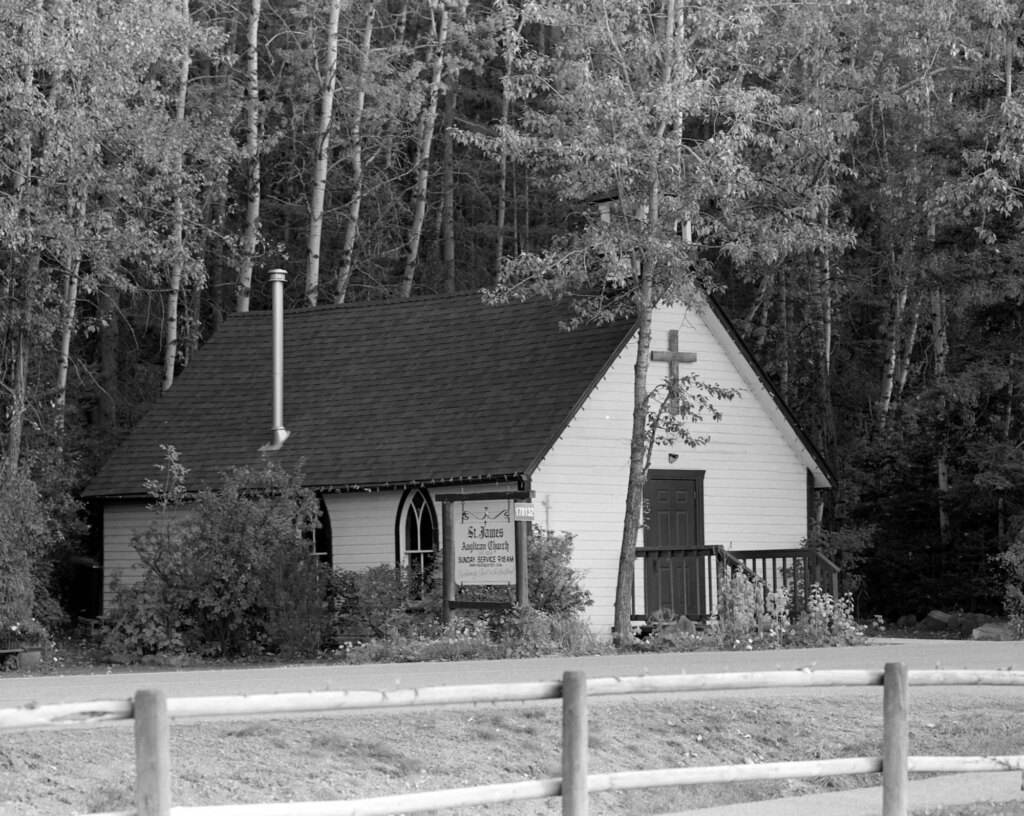
I was in Millarville by 1PM, a very rich hamlet with mountain views. I don’t think there was a home there worth less than five million dollars. Of course, the best images were captured facing away from it.
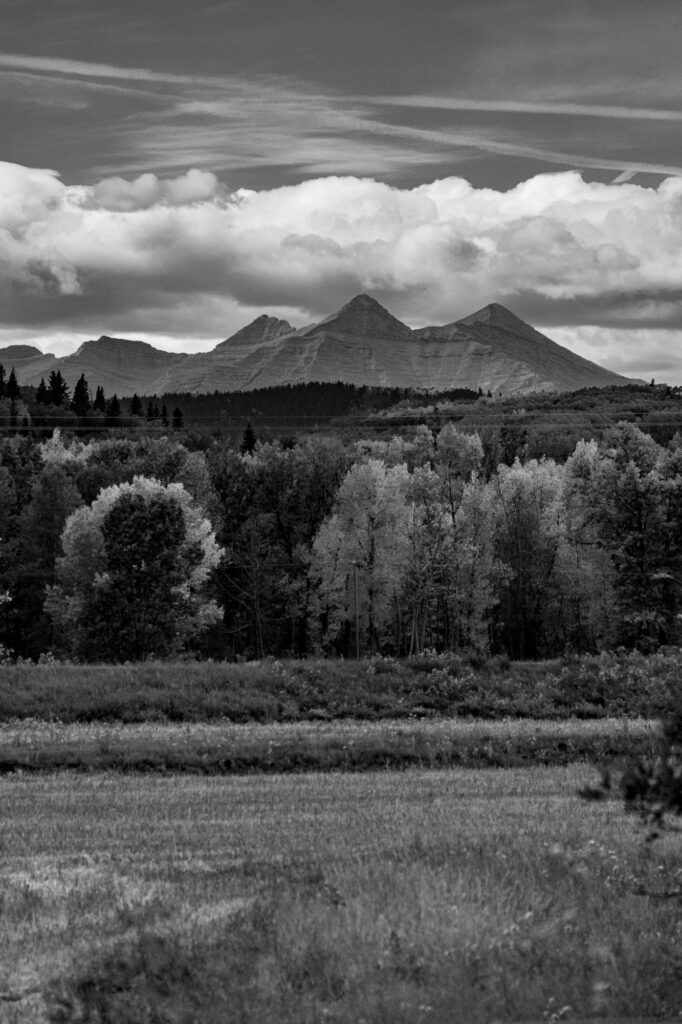
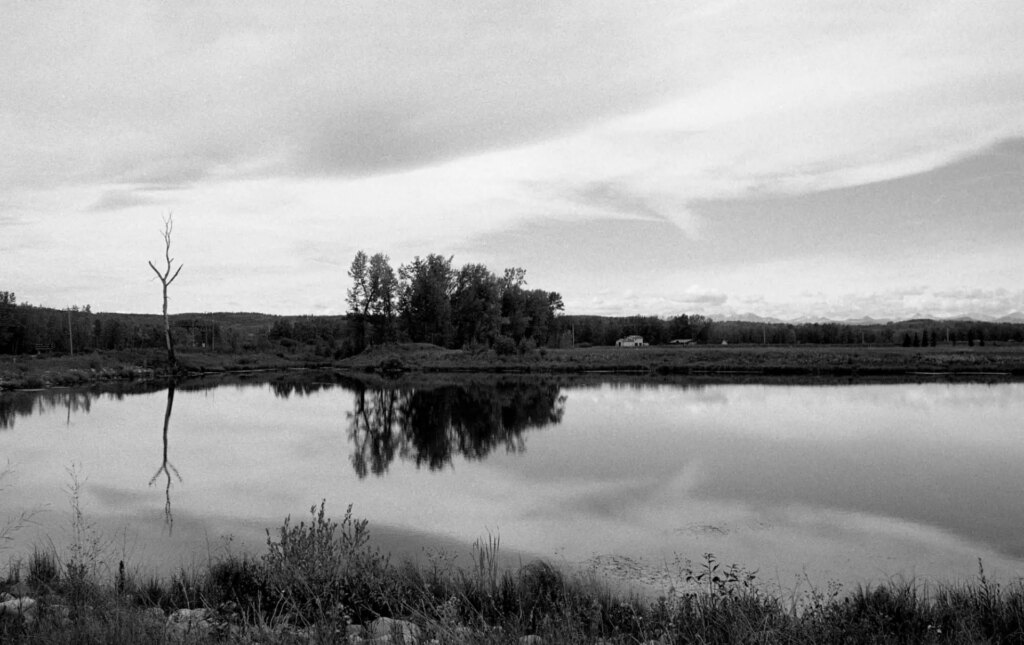
I found Turner Valley to be a cute little town and enjoyed my walk though it.
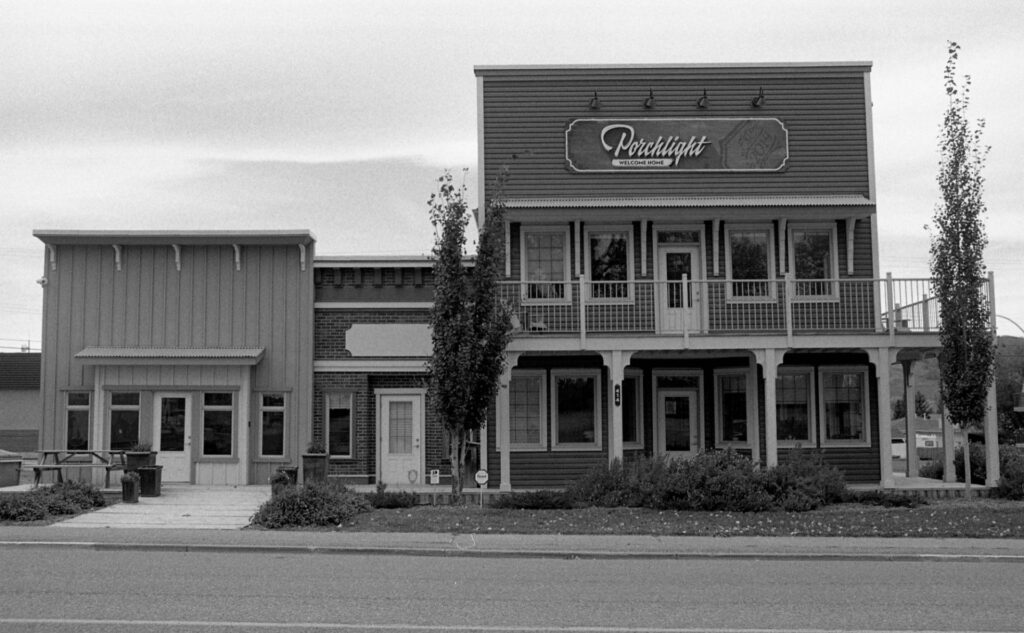
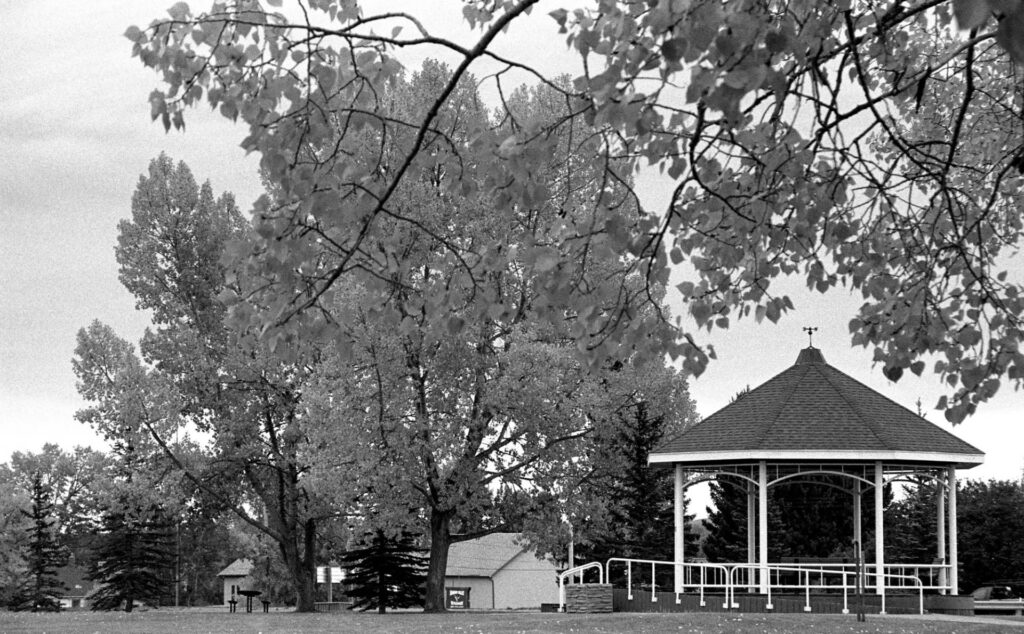
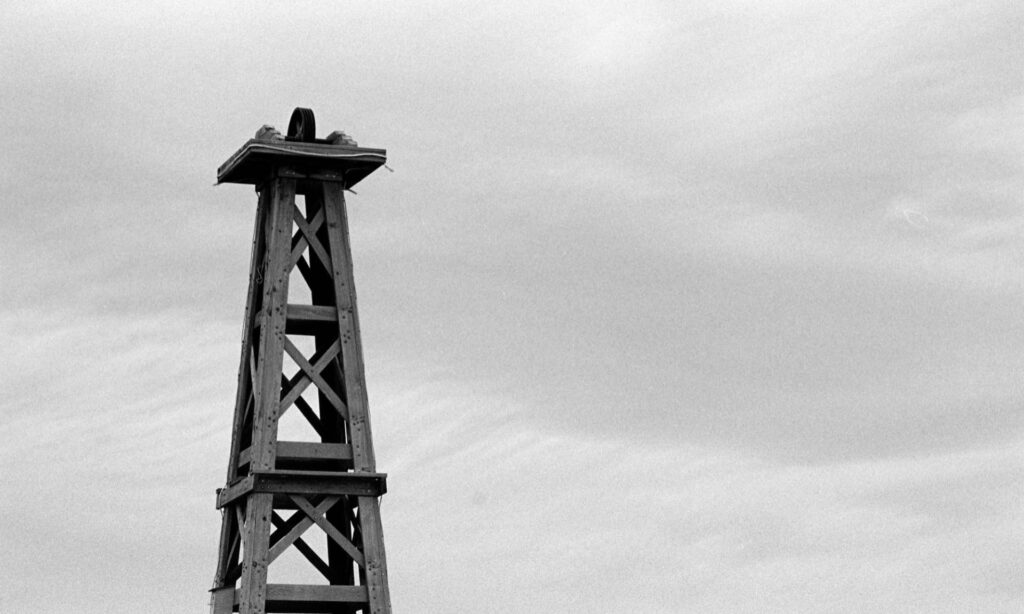
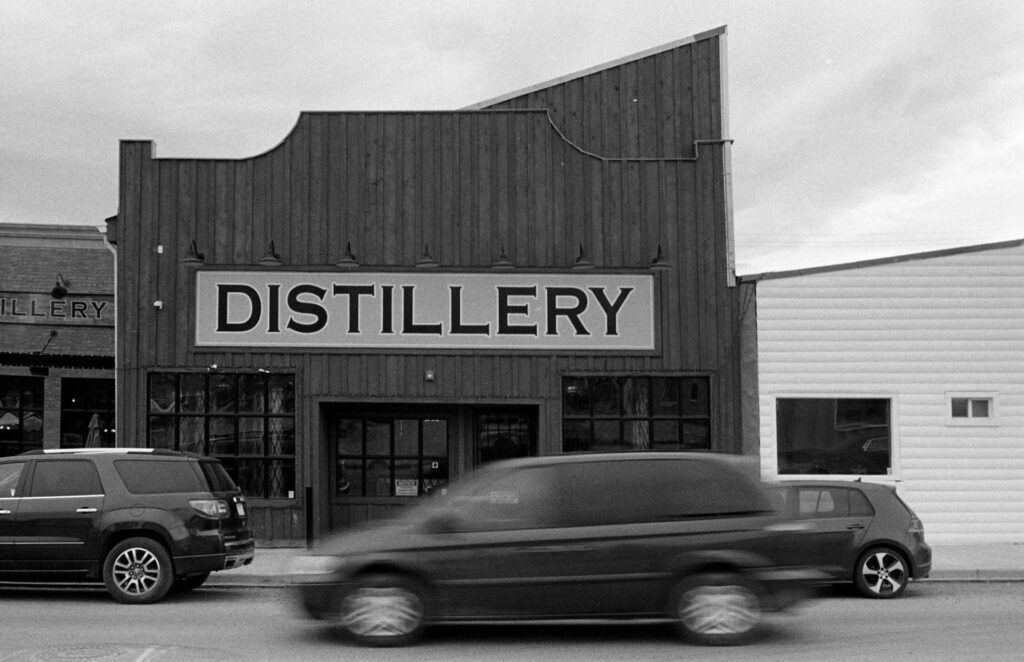
Next up was Black Diamond. I had been through here a bunch before but never stopped in, so I was really looking forward to my experience here. I spent a good amount of time walking around and it was in the top three places I took the most photos. I was concerned about developing the last roll of Tri-X exposed at 200 ISO properly, so I needed to label it. I walked into a gas station and asked for a Sharpee and let me tell you, when he saw me pull out a roll of film and start writing on it, he had questions. He seemed old enough to remember film so he knew what I was doing but a little surprised to see it in 2021.
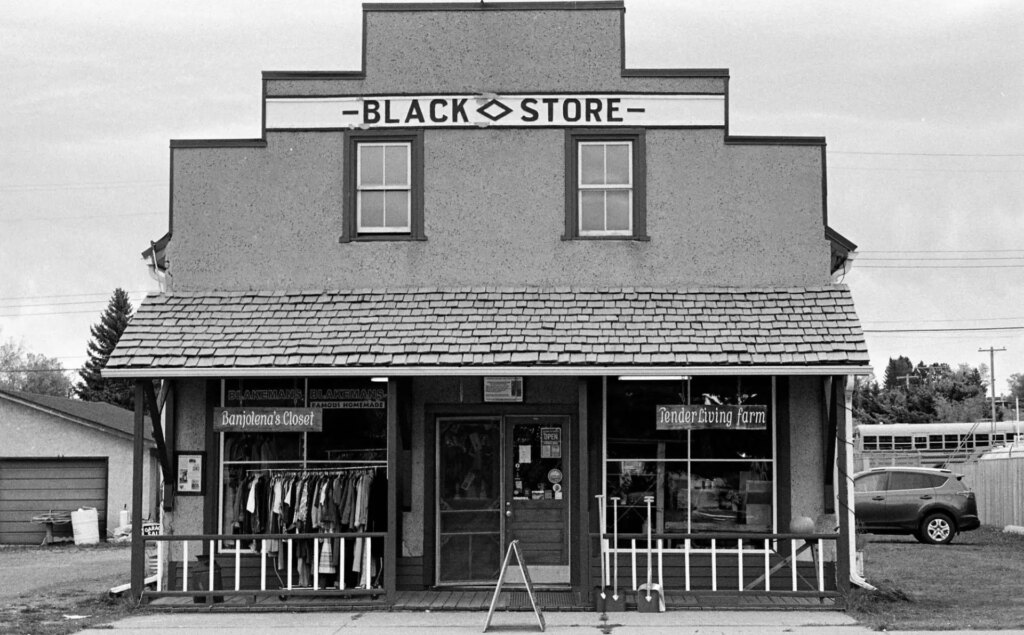
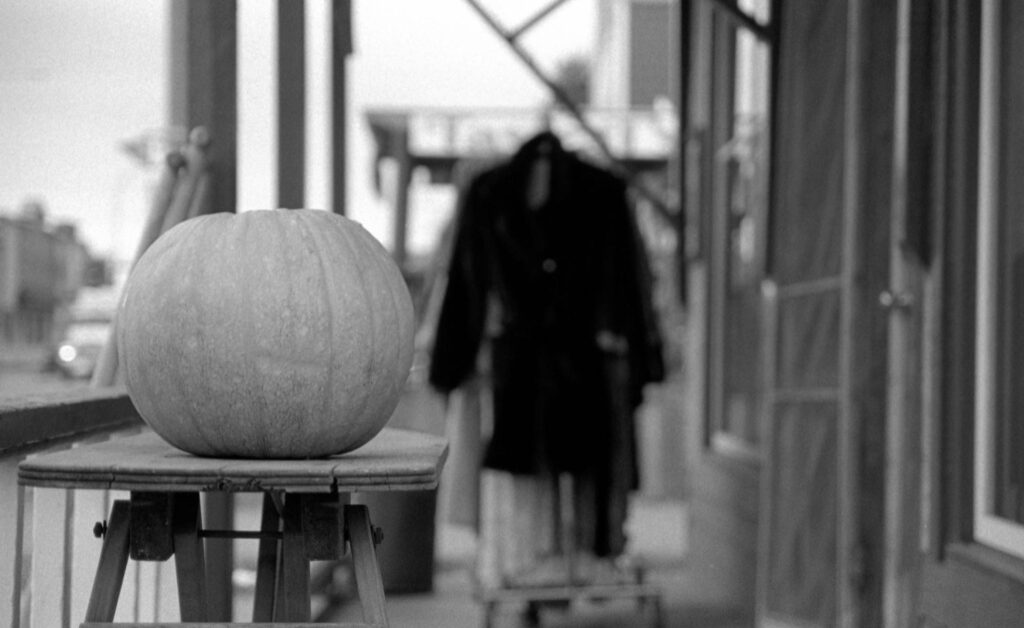
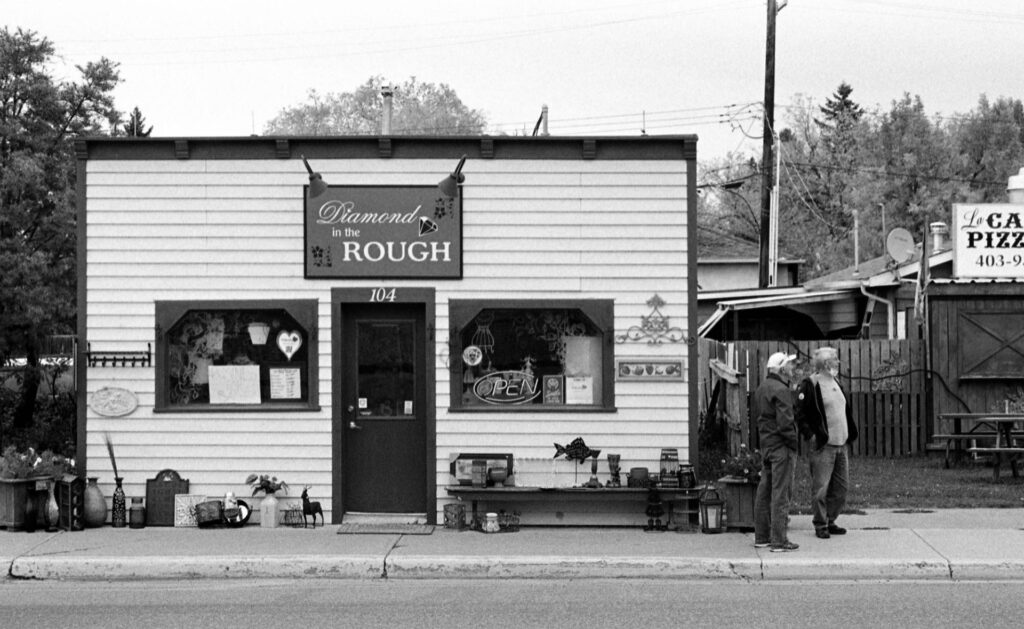
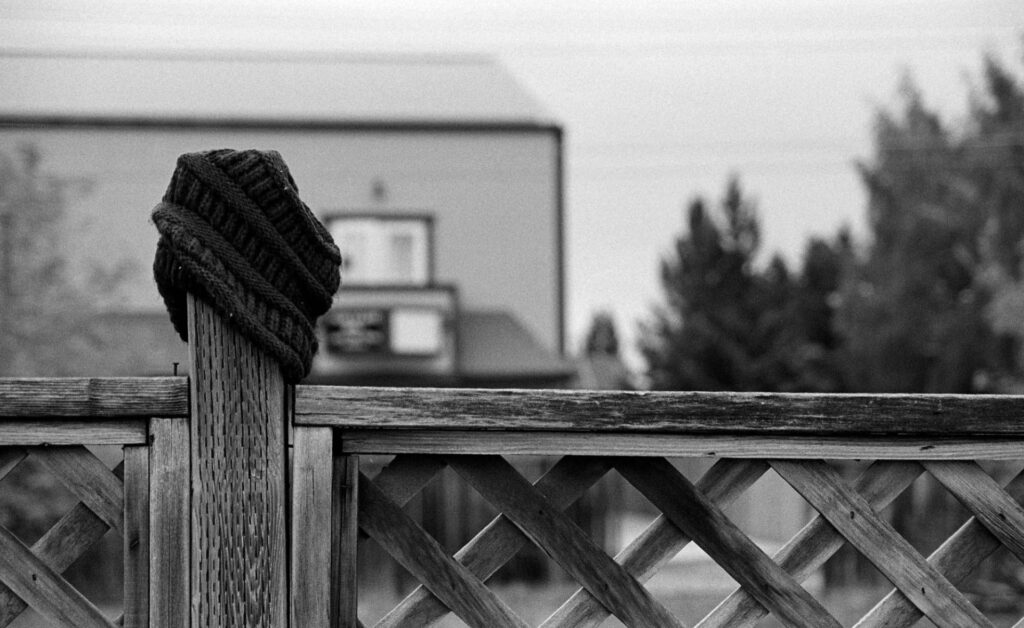
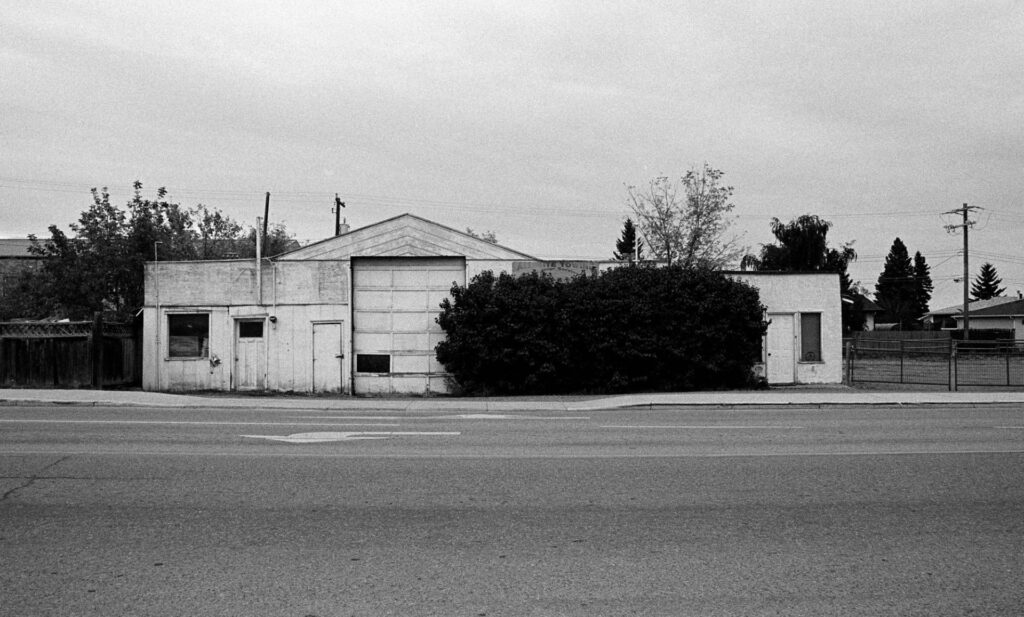
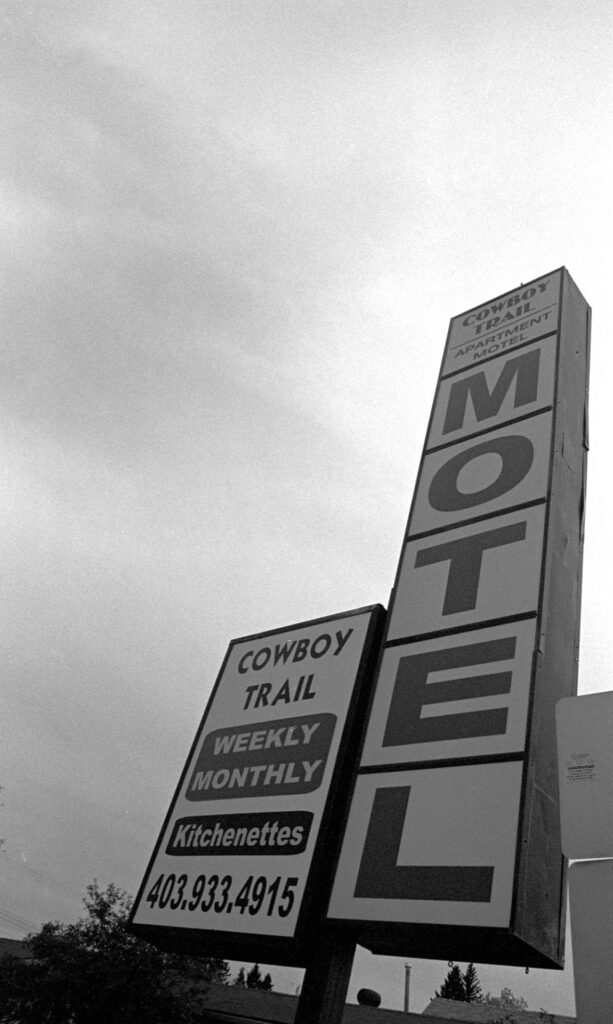
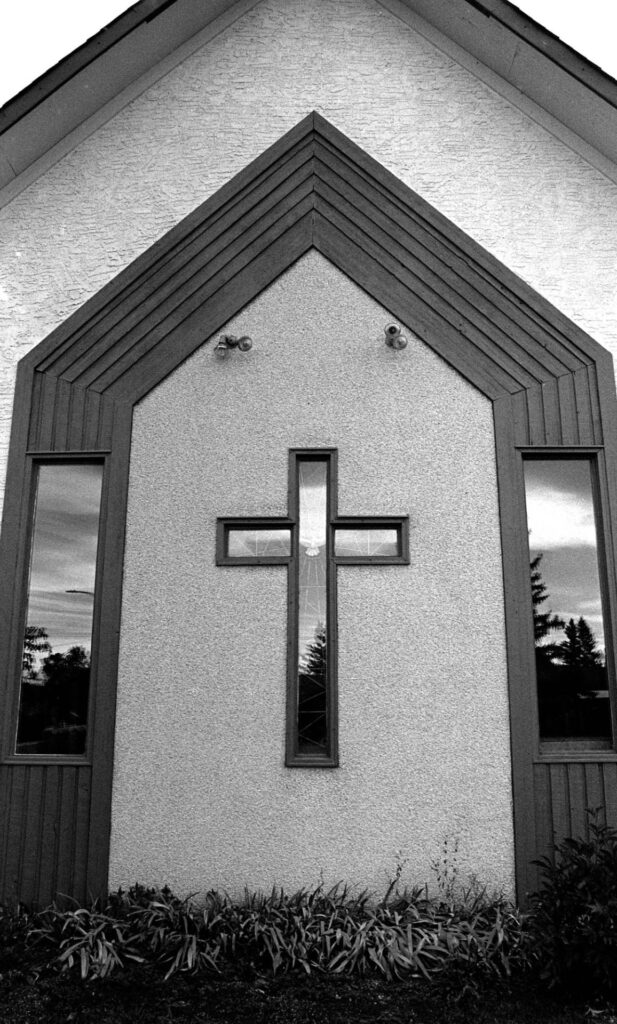
It was around this time I realized I was down to just two 35mm rolls. Why I didn’t bring more film I am not sure, but I had to conserve how often I used the Nikon F100 from this point on and lean into the Fujifilm X-E2S more, as well as the Pentax 6×7.
By about 5:30PM I had made it to Chain Lakes Provincial Park after an unfruitful stint in Longview. When I left Longview one of the first things I saw was a sign which read “No Services for 133 KM” and I knew I was in the thick of it. I saw my first bear, dashing up a hill. Too far away to take a photo and nowhere safe to pull over.
Chain Lakes was also a bust. My photos are just awful, possibly the worst from my trip. Partially lighting, mostly the camera operator.
By 8PM I had made it to my hotel in Pincher Creek, but not before stopping in at Lundbrek Falls, which was where I got some of the best photos of my trip, making up for the duds I shot for the last 150KM.
From my journal:
“The lookout point had a grate for a floor and you could see right through…..man….I hate heights, but I did it. I was a little shaky, but I got it done.”
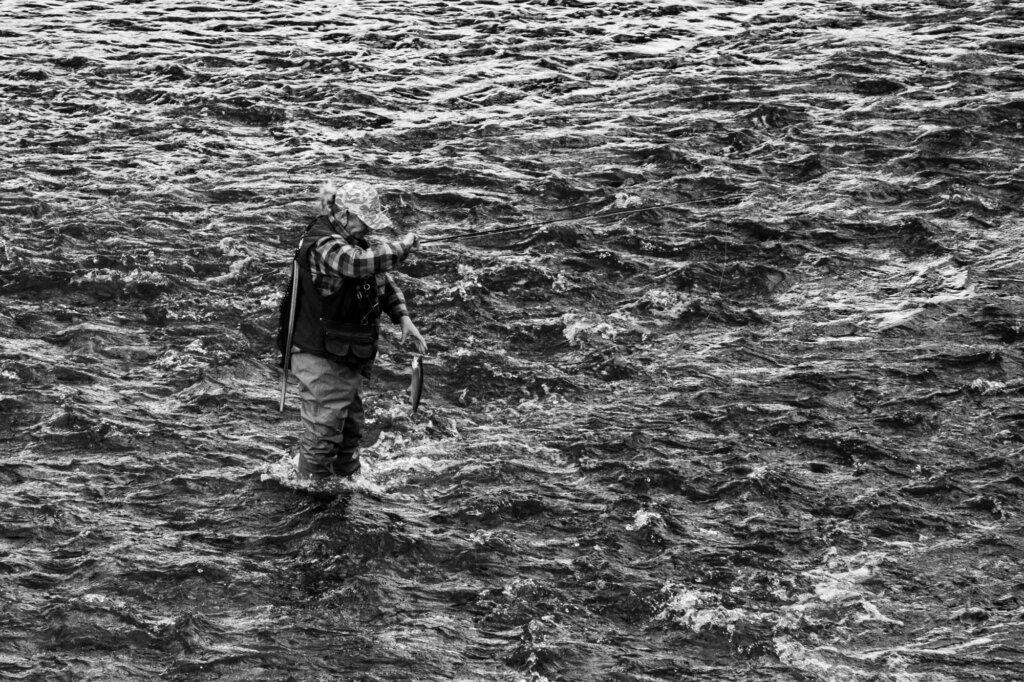
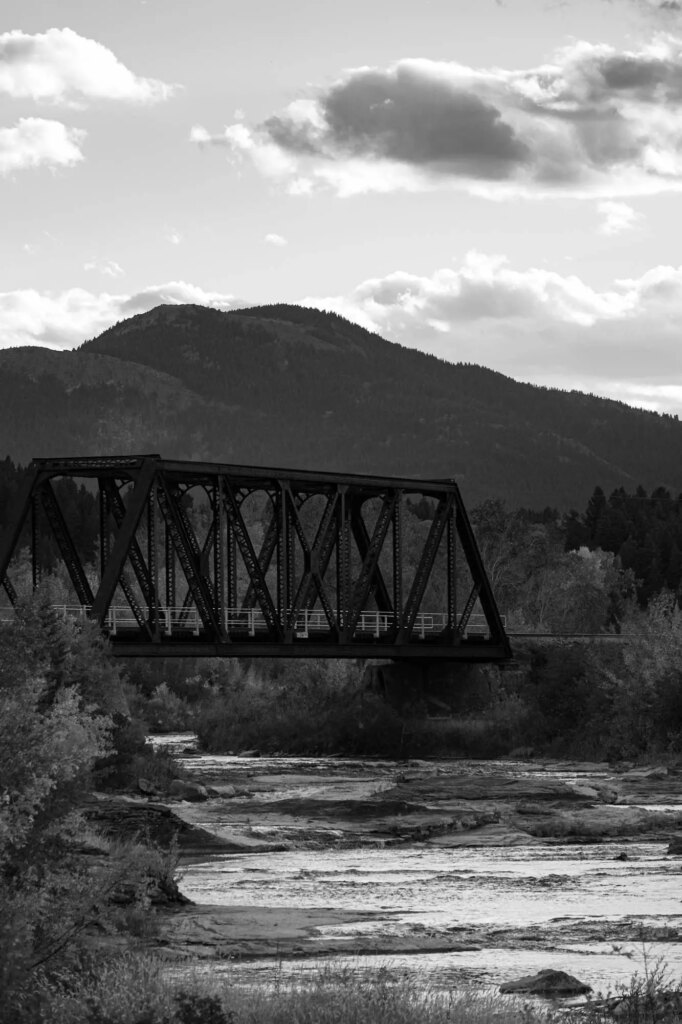
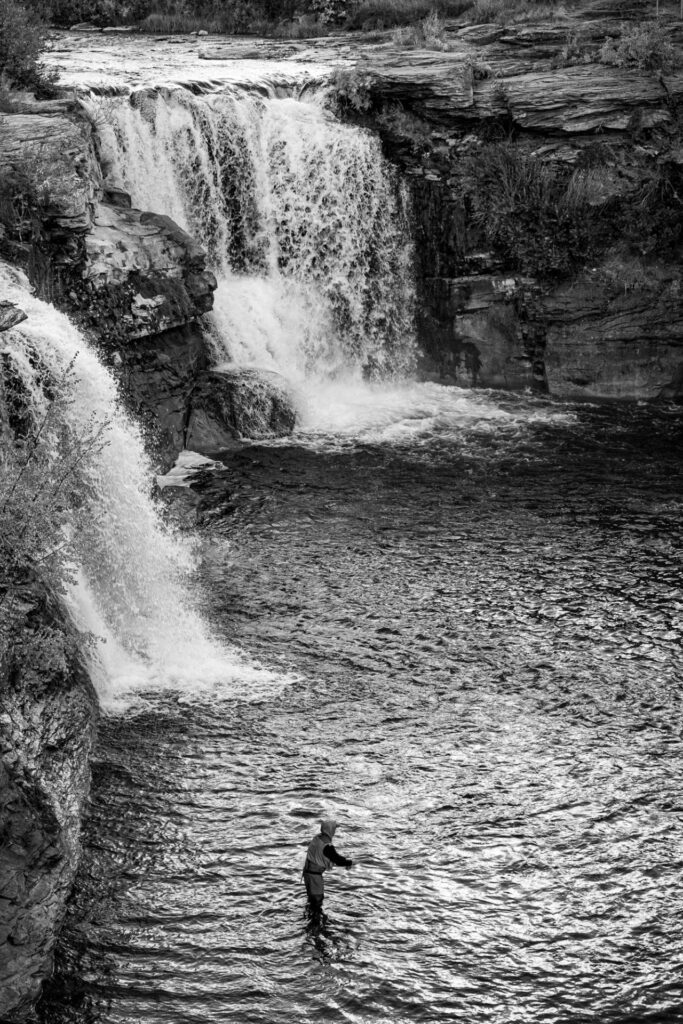
On day 4, at sunrise, I headed to The Burmis Tree, which has been dead since the 1970s and is estimated to be between 600 and 750 years old. There’s a metal pole holding up one of the main branches. It had been years since I was here and wanted to get a good sunrise shot of it.
The sun rose behind me and in the sky was a line of low hanging cloud cover so the golden light only shined on it for a couple of minutes, but I got my shot.
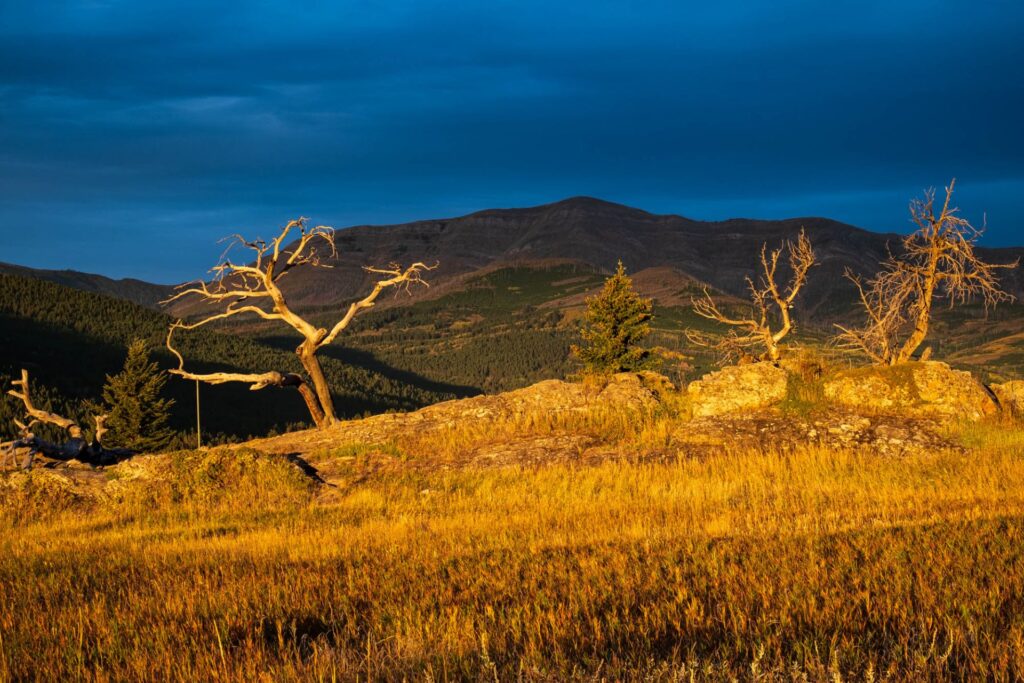
I backtracked to Lundbrek, but didn’t capture the magic I had the previous day. Pincher Creek was also largely uninspiring.
Waterton Park however, was a slice of heaven. Until now, I had no idea that something so beautiful existed in Alberta. I don’t say this lightly, or for the sake of being dramatic, but I shed a tear as I drove in. As great as my photos turned out, I don’t think they did the park justice. It was a beauty you felt in your chest. If this had been my last stop it would have been a perfect ending to an imperfect trip.
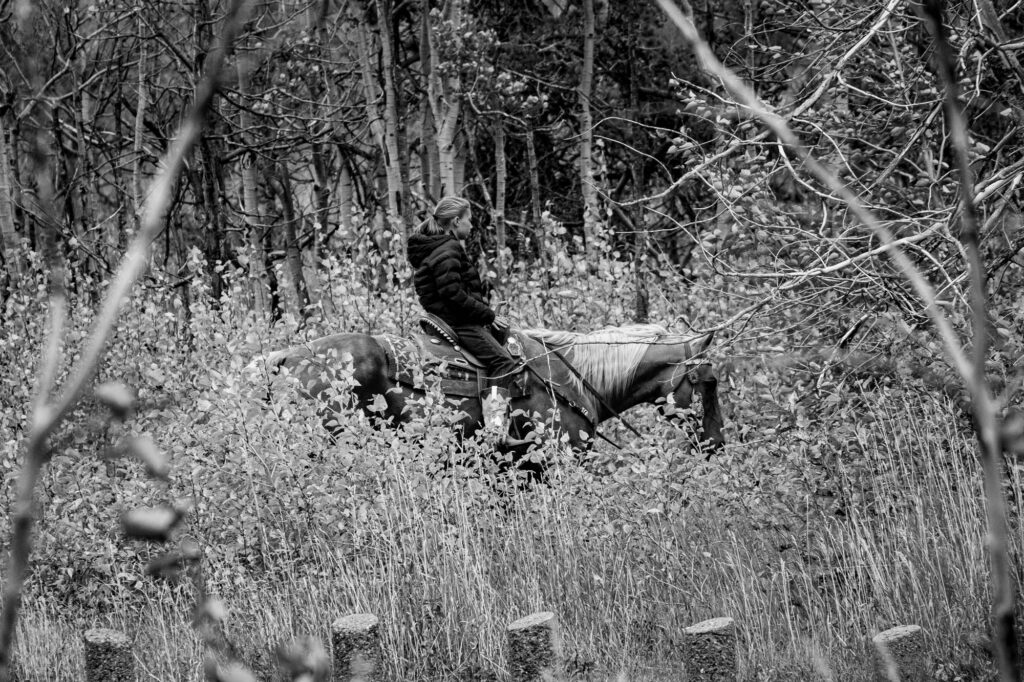
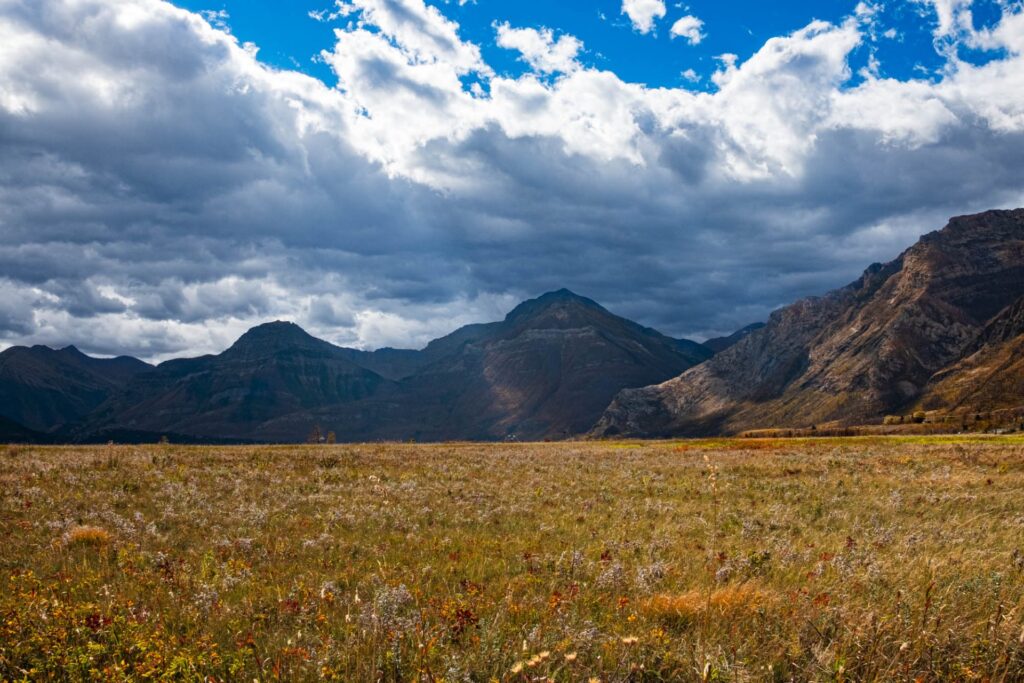
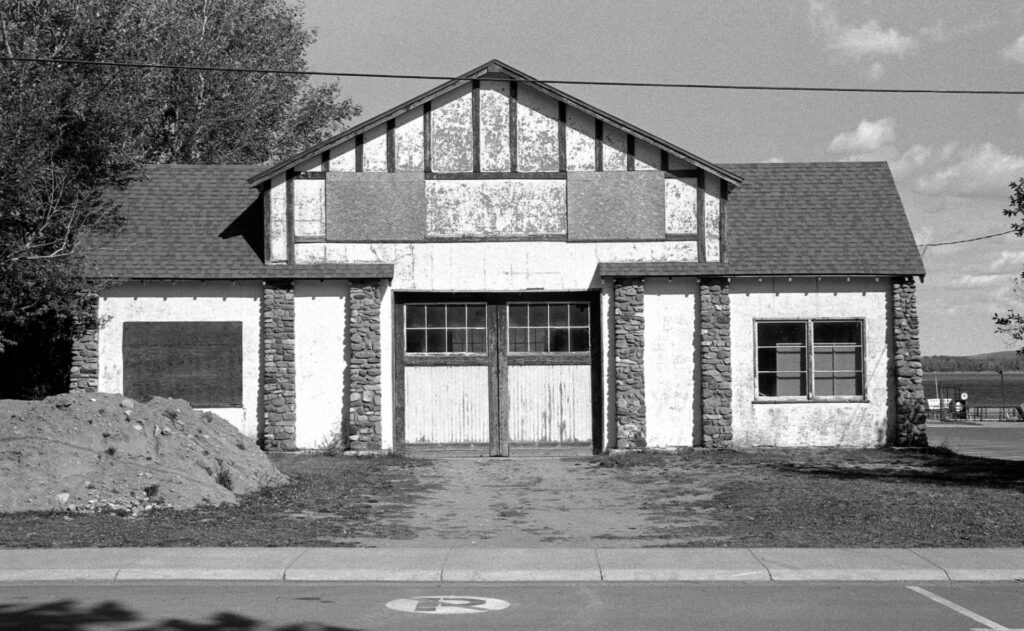
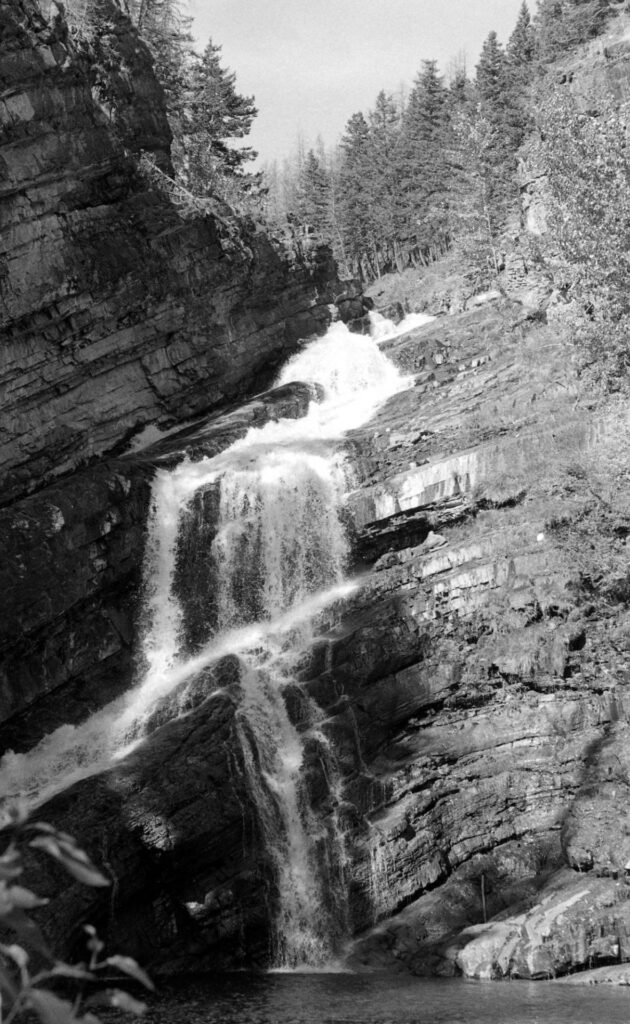
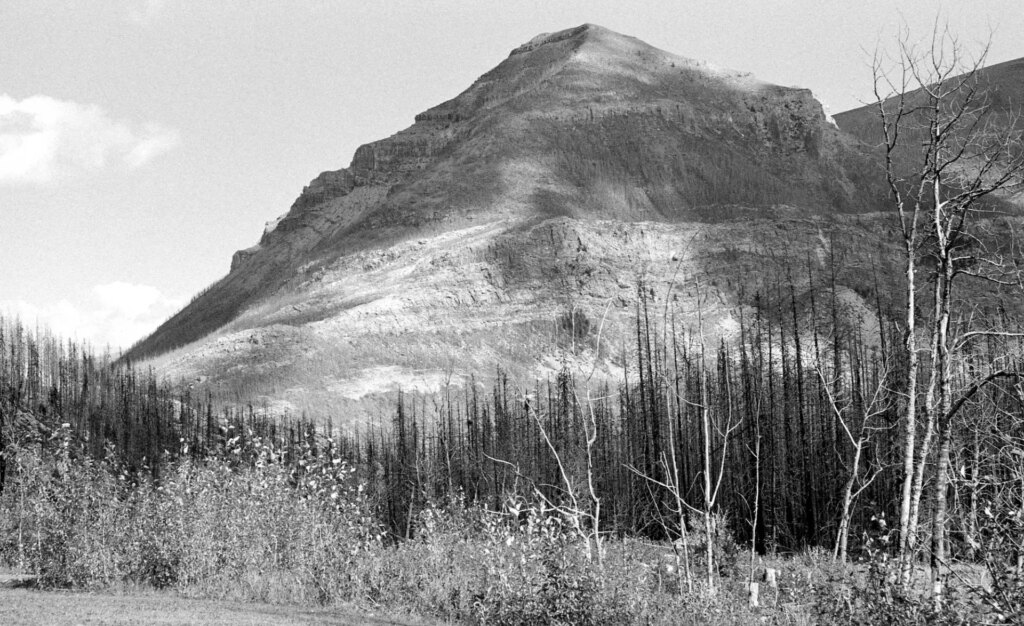
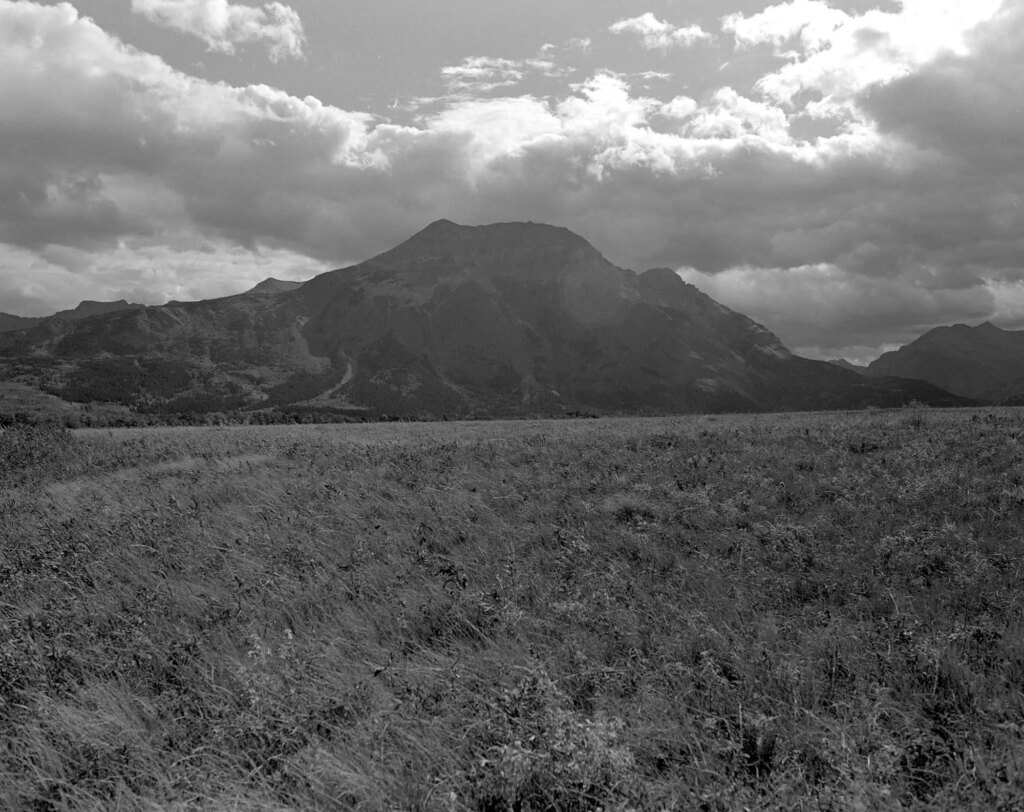
Arriving in Cardston, my last stop, was a sour end to an otherwise successful journey. With a population of just over 3000, it was apparent from the start this town had a disproportionate homeless population. I also arrived during rush hour and was tired of seeing mandatory masking signs in small towns only to walk in and see no one, including the staff, wearing one. Perhaps I was exhausted, and my body knew this was the last stop but I was more than ready to return to my life.
This entire experience gave me a lot of confidence as a photographer, and helped me greatly in future road trips. Here are a few lessons I learned from my four days on the road.
- Use gear you trust, now is not the time to experiment with new films, lenses or camera bodies.
- The less types of film the better. If you can, stick to one film. This will significantly reduce your time in the darkroom when you get back, with batch developing.
- Distance does not equal time. Sometimes I drove a hundred kilometers before I saw anything, other times I spent two or three hours in one spot.
- Don’t book hotels in advance. Because of number three, I never booked a hotel until I was ready to pack it in. While this meant I had to head home halfway through, it also meant I didn’t have to rush to my destination, not did I arrive too early. Booking.com was my best friend during this, and subsequent trips.
- Download your maps and bring a backup, and dedicated GPS. It’s the 20s, but cell phone coverage is still spotty. I still find myself in areas with zero service.
I hope you enjoyed this journey. It was interesting looking back at my journal, and the photos two years later. I almost went out this week and covered the south leg of the trail again, but I think I’m done for the year. I would love to hear your road tip tips in the comments!
Stay Classic!

Behind the Scenes
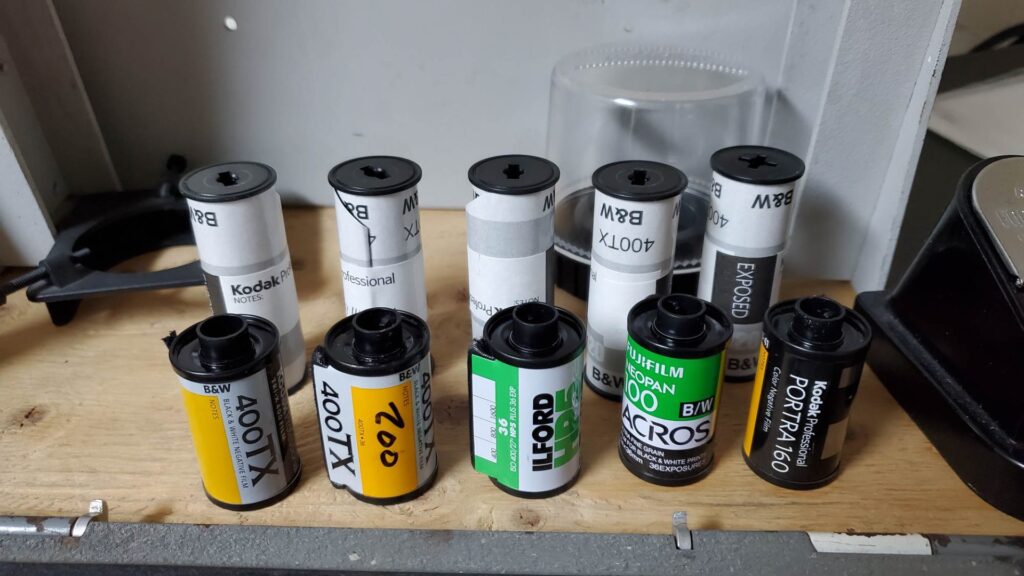
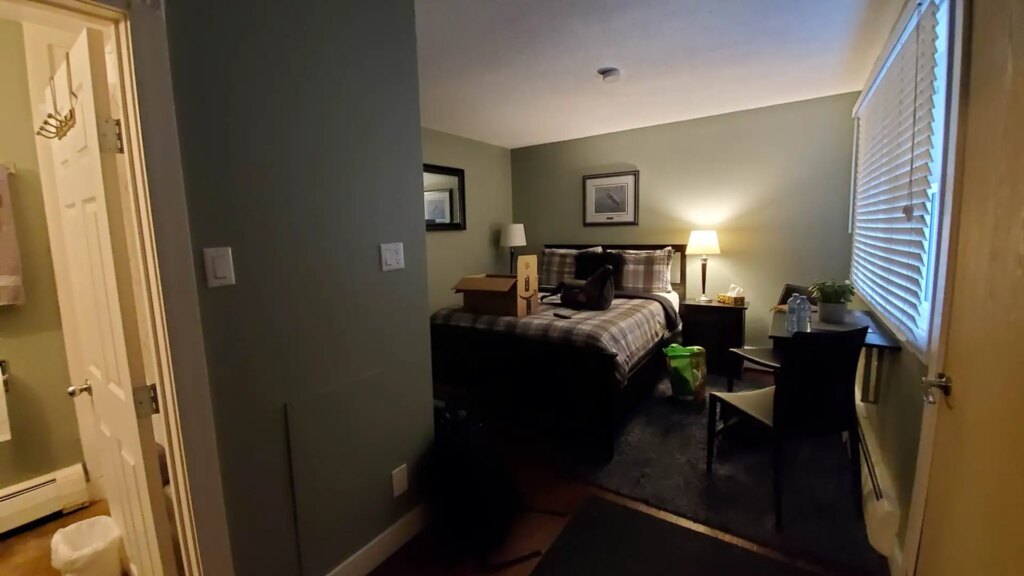
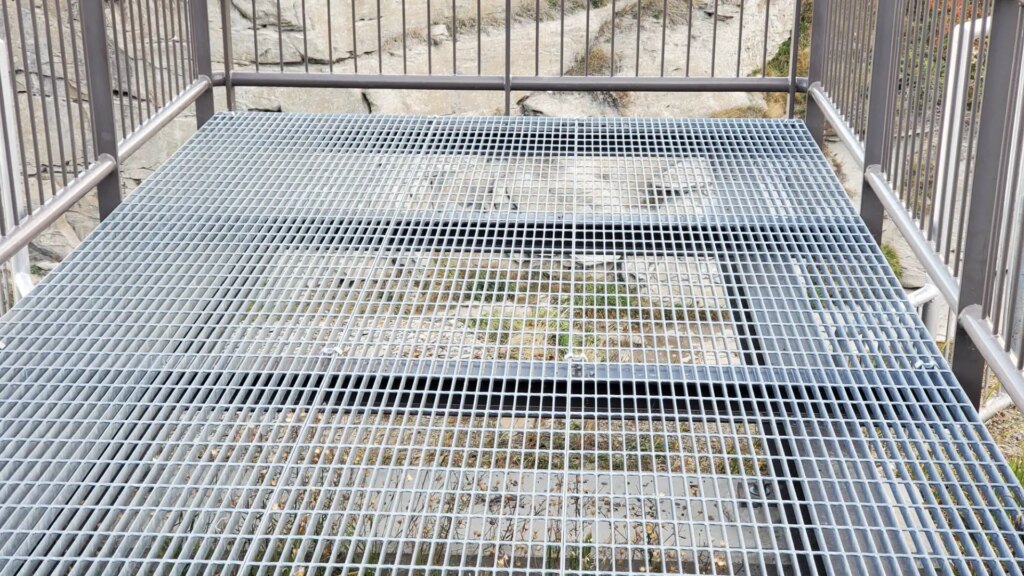
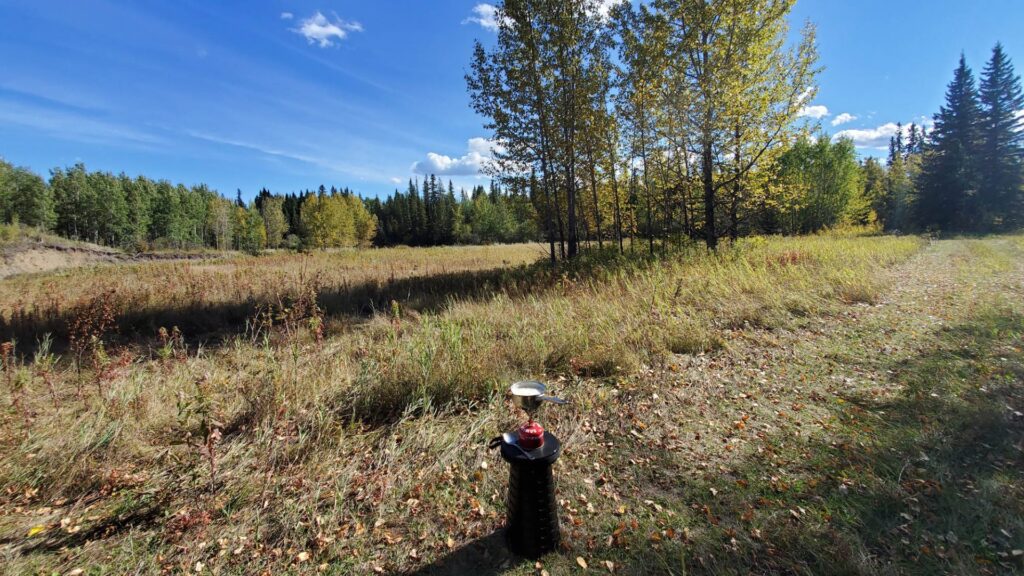
Share this post:
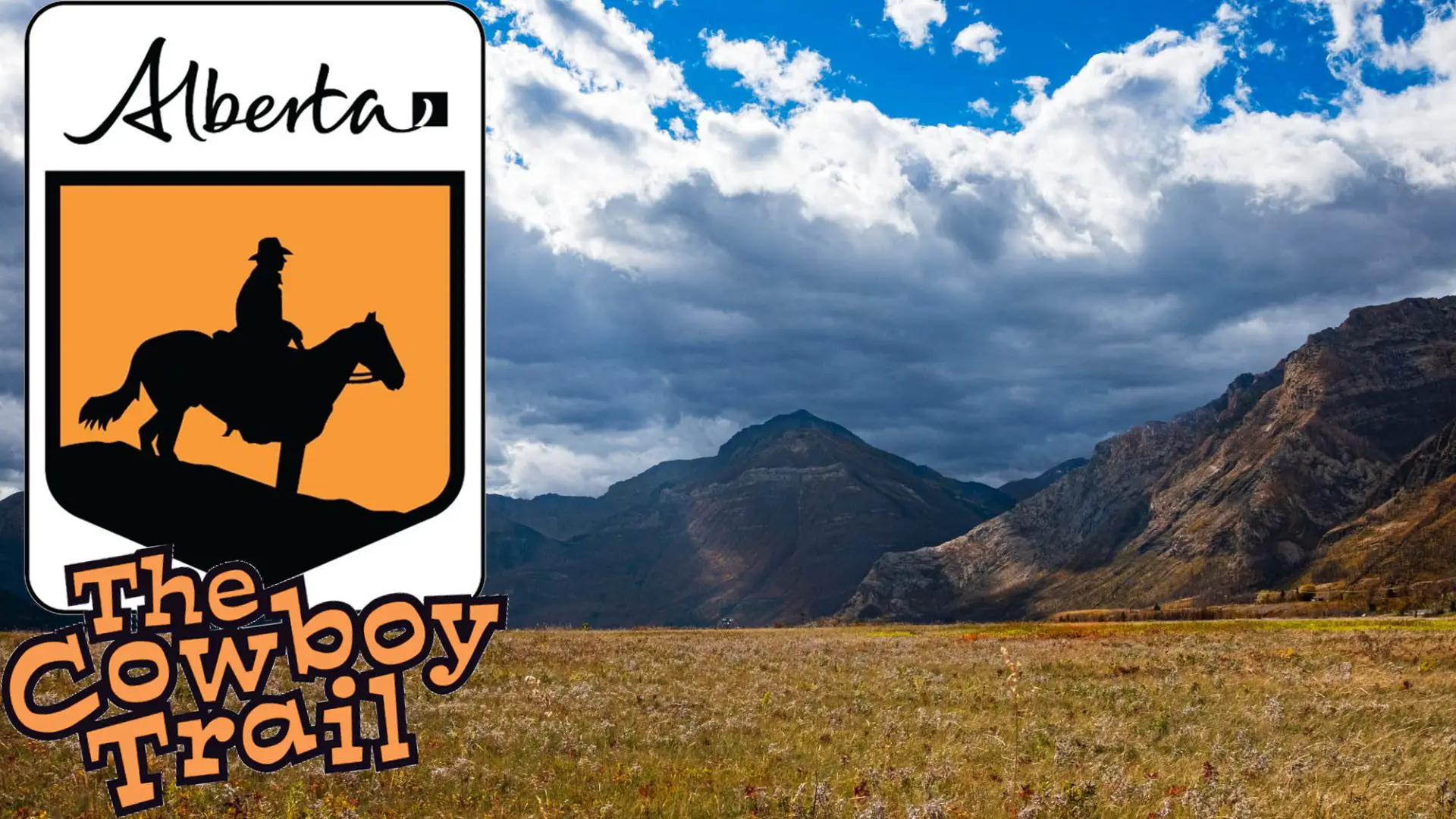
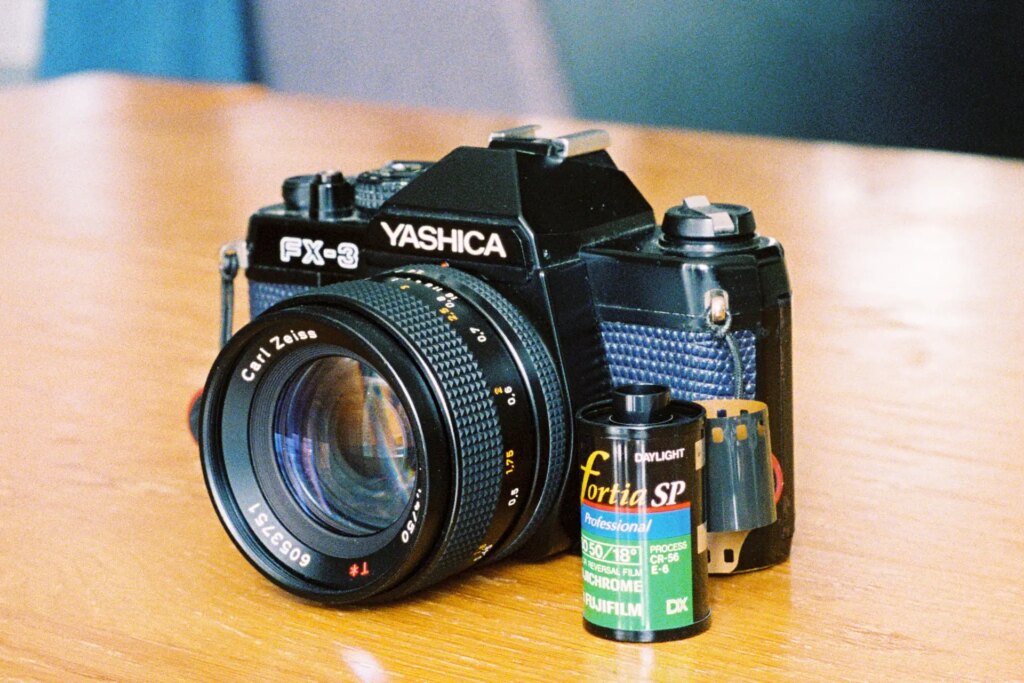
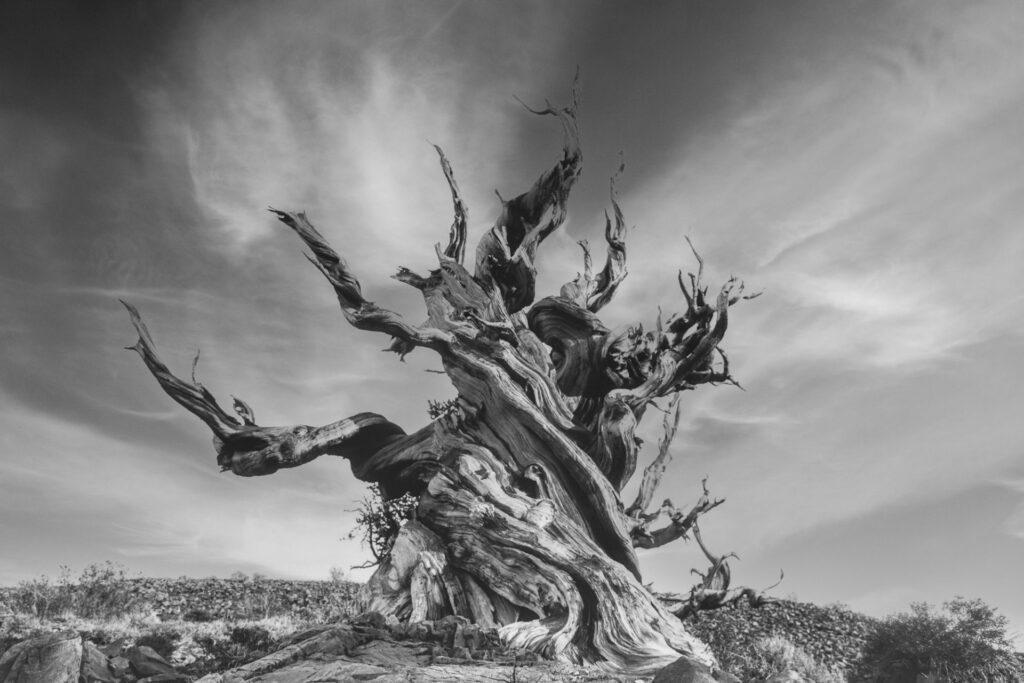
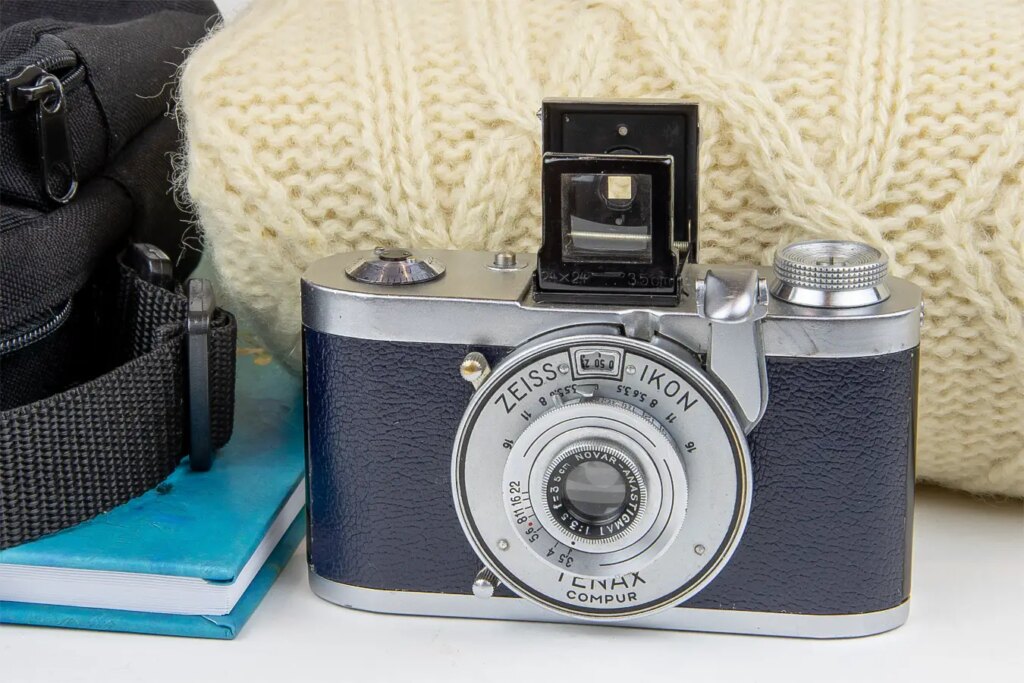
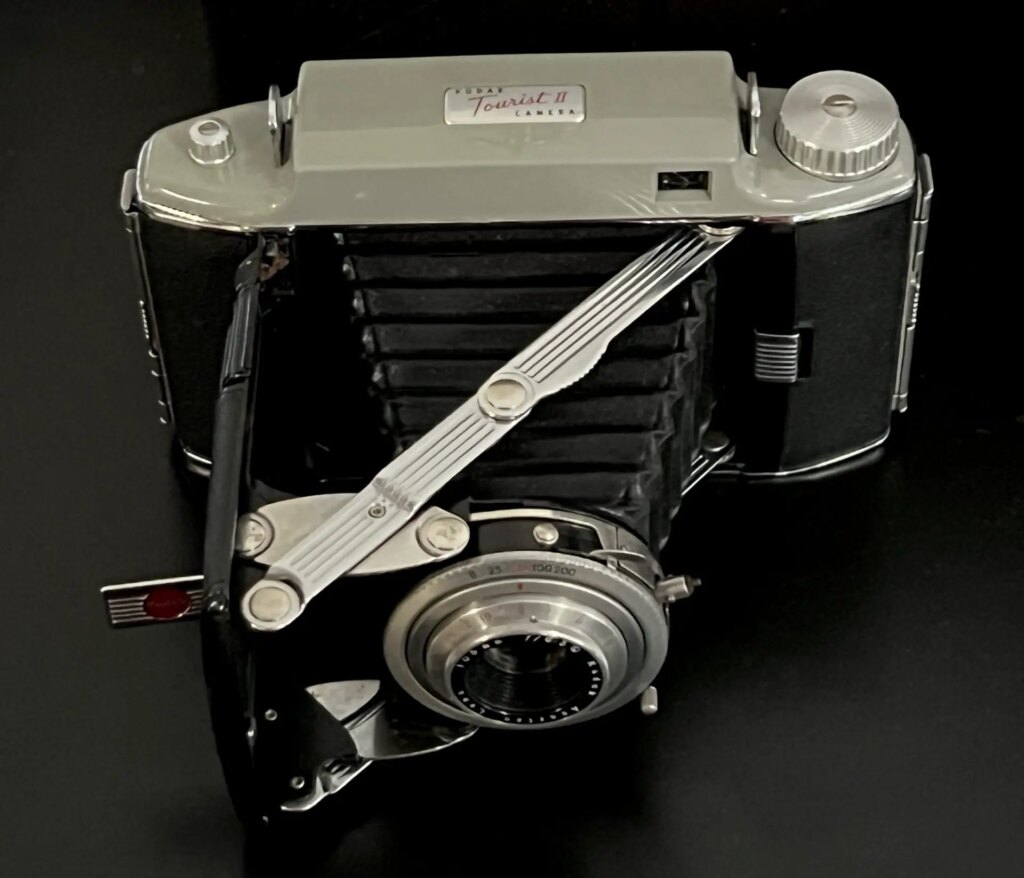




Comments
John on Traversing The Cowboy Trail (Part two)
Comment posted: 26/10/2023
I particularly like the photos of buildings you passed on the way, especially the church.
Regards,
John.
Comment posted: 26/10/2023
Jeremy on Traversing The Cowboy Trail (Part two)
Comment posted: 26/10/2023
One tip I would add is to carry a variable ND and, if shooting black and white, a contrast filter(s). The ND because you can't control the sun or you may find you want a long exposure. The contrast filter(s) because dull conditions may call for it. Other tip - a very thin plastic bag, like a three gallon trash bag, along with a lens hood and gaffer tape. Those items are minimal to carry and may allow shooting in light/moderate wet weather. I typically attach the plastic to the front edge of the hood and drape it back over the entire camera.
Looking at those two landscapes, the D76 - it's a heck of an adjustment with Kodak chemistry disappearing. These days I use Flic Film Black White and Green 1-shot in the Jobo most of the time, which keeps costs down and it doesn't bother me dumping it down the drain. I do send stuff out too though if I'm too busy with kids and work to process it myself. My lab is switching over to DD from TMAX RS. I actually welcome that change, since Delta 3200 and Kentmere don't like TMAX RS.
Solid advice on the traveling photography - on the development front, I also find stand development helps, as I can soup ISO 100 thru 400, and 400 thru 1600 all together.
Comment posted: 26/10/2023
shawn granton on Traversing The Cowboy Trail (Part two)
Comment posted: 27/10/2023
Michael on Traversing The Cowboy Trail (Part two)
Comment posted: 29/10/2023
Comment posted: 29/10/2023
Dave O'Haire on Traversing The Cowboy Trail (Part two)
Comment posted: 10/11/2023
Happy Trails
Dave O'H.
Comment posted: 10/11/2023